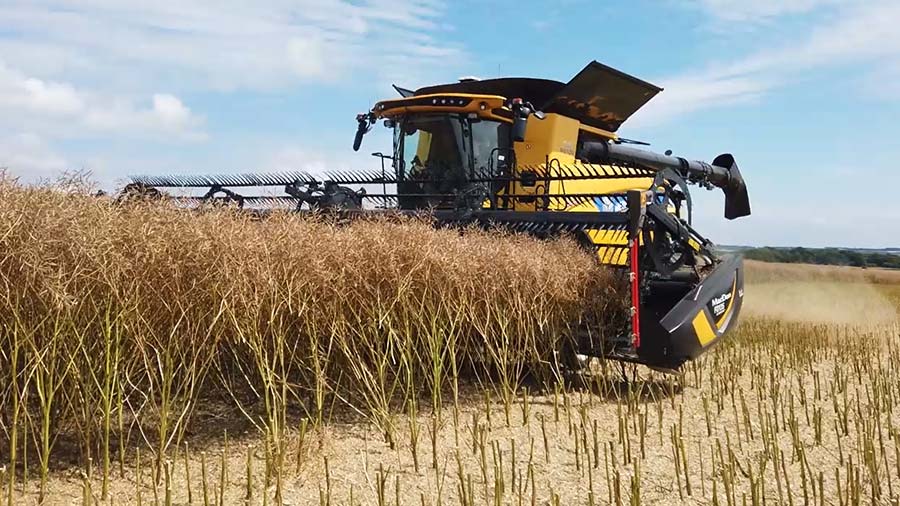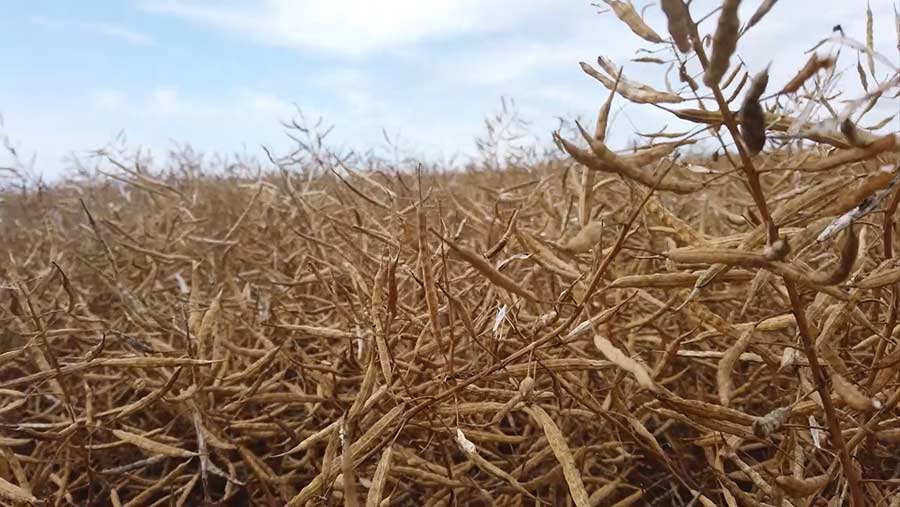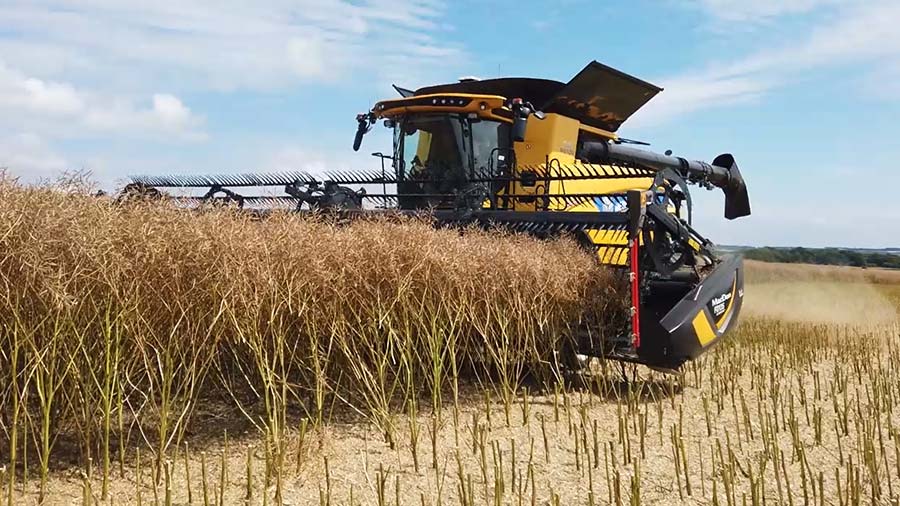Video: Welsh oilseed rape harvest yields over 5t/ha
 Richard Anthony's oilseed rape harvest © MAG/Emma Gillbard
Richard Anthony's oilseed rape harvest © MAG/Emma Gillbard Oilseed rape harvest is off to a flying start for Welsh farmer and contractor Richard Anthony, with his crops yielding up to a very impressive 5.8t/ha in the Vale of Glamorgan – which is significantly higher than last year.
Harvest of the 154ha rapeseed area began on 26 July, with the hybrid variety Ambassador averaging 5.5t/ha, while another hybrid Exsteel averaged 5t/ha.

© MAG/Emma Gillbard
“The crop looked promising all season, but until we put the combine in we just didn’t know how it was going to perform. We’re really pleased with the yield. In fact, I had to recalibrate the combine just to double check it was measuring it right,” said Mr Anthony.
See also: Harvest 2021: OSR and barley survive flea beetle and weather in Cambs
Watch the video of the harvest in action and hear from farm manager Dan Moore.
Flex header
Crops are coming off at about 10% moisture from Mr Anthony’s New Holland combine and a 35ft Canadian MacDon flex header, which he purchased four years ago after seeing one in Australia.
“The header is one of the best bits of kit on the farm, allowing the header to follow the contours of the land and is incredible at picking up any fallen crops,” he added.
This season, crops received no insecticide sprays but were grown with a companion crop of buckwheat, spring beans and berseem clover.
This helps mitigate against cabbage stem flea beetle attacks by hiding the oilseed rape from flea beetles, promoting soil health and aiding early crop growth.

Richard Anthony’s oilseed crop © MAG/Emma Gillbard
Establishment
Crops were sown in the second week of August last year, with an adaptive Mzuri drill with four hoppers, at a relatively low seed rate of 32 seeds/sq m.
The farm’s soil types range from sand to heavy clay loams, some of which have a very high silt content of up to 70% which is challenging to manage.
After many trials over the years, the seed rate was found to be the most successful, enabling good branching to maximise pod numbers and, consequently, yield.
Farm manager Dan Moore says variety selection is key when it comes to successful establishment.
They opted for cultivars that have good autumn vigour to allow crops to get up and away from the flea beetles as quickly as possible.
Two applications of digestate were applied – one to the seed-bed and a further application in spring, along with fertiliser.
Regenerative agriculture
As Mr Anthony is beginning to implement a regenerative agriculture farming approach, he aims to cover all ground after harvest as he doesn’t like to leave the ground bare.
After the oilseed rape harvest is complete, a cover crop of phacelia will be planted before winter wheat to keep the soil biology working.
“We’ve done a lot of work on the farm using regenerative agriculture methods and are now carbon negative, but we still have a long way to go,” he said.
Next season, he is upping his oilseed rape area to 200ha and replacing the berseem clover companion crop with vetch, which protects soil from erosion and helps improve soil tilth and vigorous growth.

